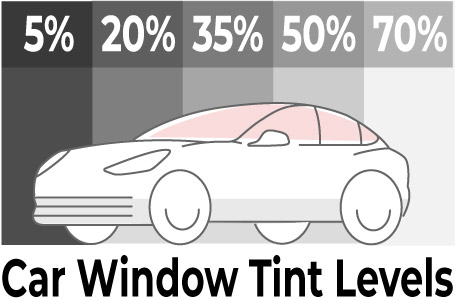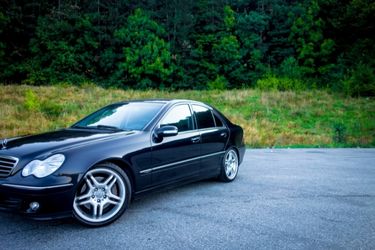
Written by Kayla Jane Barrie Updated on Feb 26, 2025 5 mins read

Car window tinting goes beyond just another add-on for your car. Window tinting is a standard car modification that drivers of all types of vehicles consider. But what are the benefits? Is it legal to have tinted windows in the country?
In this blog, you’ll learn about the pros and cons of window tinting and how it can affect your car insurance quote.
Provincial and federal laws across Canada determine how dark of a tint you can add. 70% of light must be able to pass through the windows, as mentioned in the 2022 Ontario Passenger / Light-Duty Vehicle Inspection Standard. There are some specifics around what windows can be tinted and how dark. For example :
When you buy or lease a new vehicle, you do not need to worry about how dark the tinting is because manufacturers must adhere to the federal government.
On the other hand, if you buy a used vehicle, it’s up to you to ensure the tinting complies with the laws. It is not the dealer's responsibility to check.
Always check the rules and regulations in your municipality around window tinting.
Tinting is made to provide privacy and security, but you do not want to obstruct your ability to see and drive safely. In Ontario, you should avoid placing any window film tinting on your windshield and only use a tint of 70% VLT (visible light transmittance) or higher on your front side windows.
As of 2020, vehicles manufactured after January 1, 2017, are prohibited from after-market tinting on the front windshield. The OEM legal tint on the front left and right window is 30%.

Depending on which province you reside in, tinted windows are different. In some places, you can get your front windows tinted; in others, it's illegal. Here's a look at the laws of tinted windows across Canada :
Saskatchewan, Nunavut, NWT, PEI, Newfoundland & Labrador and Nova Scotia do not allow any tint in the windshield or front side. However, you are allowed any tint on the rear window and back side of any VLT.
Yukon regulations state that windows cannot be obscured in any way that makes driving a hazard. Check with local authorities if you are travelling or currently living there, and consider getting your windows tinted.
You can learn more about window tinting laws by visiting Canada Tint Laws.

One of the main reasons the country has laws regarding tinted windows is that police need to see through the front side windows to ensure everyone’s safety. Three reasons why there are laws around it are :
If you are pulled over, some police will check if your vehicle has a legal tint by using a photometer to measure the percentage of light that goes through the window.
As of spring 2021, Timmins police officers have a new tool to check the transparency of tinted windows. The town was concerned about the increase in stunt driving, and finding weapons or drugs inside cars.
If you are getting a vehicle with tint, you can check if it’s at the legal amount. Here’s how :
If you notice your windows are lower than the legal limit, consider getting the tint removed
If you comply with the window tinting laws, you will likely not see an increase in your Ontario car insurance.
However, since each province or state have regulations, you could receive a ticket if your level of tint is illegal there. Always check the rules of the destination you are going to before hitting the road.
If you get into an accident in another jurisdiction and your tint is illegal, it could increase your insurance costs. This is because your insurer may handle the claim differently since you violated the law wherever the incident occurred.
Tinting your windows goes beyond an aesthetic desire. There are various benefits to window tinting, such as :
Penalties for illegal car window tint in Ontario result in an $85 – $500 fine. There may be additional surcharges and fees involved.
The darkest car window tint you can apply in Canada is 70%. Specifics around which windows and how dark the tint vary by province.
Some states and provinces do not allow tinted windows due to safety and security purposes. It’s important to note that most places do not allow for an entire windshield to be tinted but have regulations around window tinting front, side, and rear windows.
Tinting your windows will cost around $100-$500 depending on where you go, the type of film, and if you choose a professional or DIY.
The best window tint percentages are the ones that will meet all your purposes for doing it in the first place. Remember to check your local laws and be positive about the look you are going for – safety always comes before style.
| Categories | Auto |
|---|---|
| Tags | Driving Tips |
Read our insurance blog to get helpful tips, information and news.
There are situations where you will want or be required to have additional insurance, often in the form of optional enhancements called the Ontario Policy Change Form (OPCF).
Do you have a driver in your household who’s increasing your insurance? You can remove them with the OPCF 28 or 28A excluded driver endorsement. Learn how to exclude a driver from your insurance.
OPCF 49 is a new incentive to help drivers lower their insurance rate in 2024 – but is it worth the risk? Learn about the pros and cons of OPCF 49 and how to make an informed decision, without losing important coverage.
Changing weather and light conditions can make driving hazardous in autumn. In this article, we’ve put together the top fall driving tips to help keep you and those you share the road with safe.